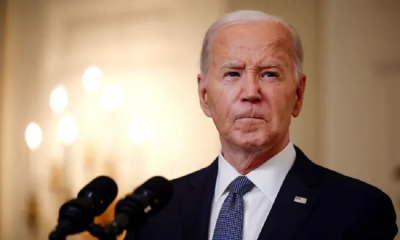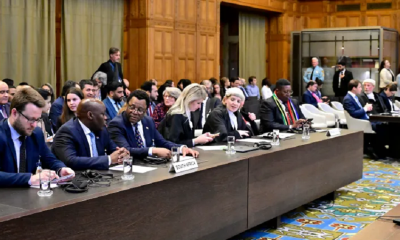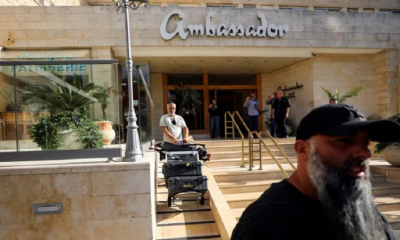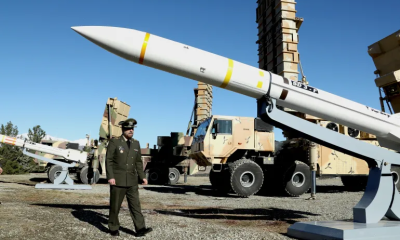Features
THE NEED FOR RESPONSIBLE MEDIA REPORTING

By Sanjeewa Jayaweera
The English cricketer Moeen Ali, who incidentally is also the vice-captain of the team, posted on his Instagram page a thought-provoking quote: “If you are not careful, the newspapers will have you hating the people who are being oppressed and loving the people who are doing the oppressing”. The quote is attributed to the American Muslim human rights activist Malcolm X.
The post obviously refers to media (TV and newspapers) reporting the ongoing conflagration between Israel and Hamas. Moeen initially posted the quote along with a Palestinian flag in an apparent show of support for Palestine. He later deleted the Palestinian flag and replaced it with a photo of Malcolm X.
Whether one agrees with Moeen or not, he needs to be lauded for having the courage to say publicly what he believed despite the negative response it would evoke in a non-Muslim country and particularly given his status as the vice-captain of the English team. It would be interesting to know whether the rest or a majority of his teammates who are not Muslim think along the same lines.
The BBC Refusing to refer to Hamas as Terrorists
The British Broadcasting Corporation (BBC) has also been heavily criticized for not describing Hamas militants as “terrorists” in coverage of the recent attacks in Israel. The UK Defence Secretary said the BBC policy is “verging on disgraceful”. The Defence Secretary said, “They are not freedom fighters, they are not militants, they are pure and simple terrorists, and it’s remarkable to go to the BBC website and still see them talking about gunmen and militants and not calling them terrorists.” Several other current and former UK politicians endorsed the views expressed by the Dence Secretary.
The BBC responded, “We always take our use of language very seriously.” The veteran BBC reporter John Simpson said, ” Calling someone a terrorist means you are taking sides and ceasing to treat the situation with due impartiality. He also said, “British politicians know perfectly well why the BBC avoids the word ‘terrorist’, and plenty of them have privately agreed with it over the years.
Many Sinhalese living in Sri Lanka as well as overseas have been very critical of the BBC and other overseas media channels for how they reported the civil conflict in Sri Lanka that spanned over 25 years. Most felt that their reporting was biased against the Sinhalese and the government. As to how many Sinhalese who now support Palestine would welcome the stance of the BBC would be interesting! The perception that the foreign media is biased was well illustrated recently when President Ranil Wickramasinghe lost his composure during an interview on Deutsche Welle, a German channel. He accused Western governments and media of hypocrisy in demanding an international investigation into the Easter Sunday bombings. He questioned whether they have investigated with foreign judges in their own countries.
Terrorists versus Freedom Fighters
The best all-encompassing definition of Terrorism I came across is “The calculated use of violence to create a general climate of fear in a population, thereby bringing about a particular political objective. Terrorism has been practiced by political organizations with both rightist and leftist objectives, by nationalistic and religious groups, by revolutionaries, and even by state institutions such as armies, intelligence services, and police.” (Brittanic).
A Freedom Fighter has been defined as ” a person who uses violent methods to try to remove a government from power. It is often said that one person’s freedom fighter is another person’s terrorist.” (Cambridge Dictionary). This is precisely what happened in Sri Lanka when, during the conflict, for nearly all Sinhalese, the LTTE were terrorists, and for most Tamils, they were freedom fighters.
Downside of taking sides based on media reports
As in the rest of the world, in Sri Lanka, too, particularly among many English-speaking Colombo folk with no previous interest or knowledge of the Middle East, the ongoing conflict between Israel and Hamas has caused strong opinions to be formed and expressed.
Most have done so based on videos and news reports aired over local and foreign TV channels. Certainly, atrocities that result in the murder of innocent civilians need to be deplored. Visuals and newspaper reports of young children and older adults being killed are repulsive and deserve our condemnation. There is no place for such atrocities in a civilized world.
However, the problem lies when those at the forefront of such condemnation do it selectively. It is certainly not the first time children and elders have been killed by indiscriminate bombing and shootings during raids in the Middle East, Sri Lanka, Ukraine or elsewhere by all parties involved in the conflict.
Based on media reports that are not balanced, it is quite natural and convenient to conclude who is right and wrong. This is precisely what Moeen was saying in his post. Whilst condemnation of atrocities against civilians is in order, there is a need to study and understand why there is an ongoing conflict, why it arose, and the reasons for the non-resolution.
The conflict between Israel and Palestine has been ongoing for several decades. This is where the media needs to play an important role in ensuring balanced reporting and highlighting the hypocrisy that prevails, particularly regarding civilian casualties during conflicts.
UN-mandated sanctions on Iraq and consequences on children
Famously, in an interview in 1996, Madeleine Albright, who was an American diplomat who also served as the US Secretary of State from 1997 to 2001, said when asked by Lesley Stahl, the interviewer, “We have heard that half a million children have died in Iraq due to the UN-mandated sanctions”. Her reply was, “a very hard choice, but we think the price is worth it”. It was a shocking admission by a senior government official of the callous attitude towards the lives of young children.
Albright later criticized Stahl’s segment as “amounting to Iraqi propaganda”, saying that hers was a loaded question. She wrote, “I had fallen into a trap and said something I did not mean”, and that she regretted coming “across as cold-blooded and cruel”. She apologized for her remarks in a 2020 interview with The New York Times, calling them “totally stupid”.
The figure of 500,000 has been subsequently challenged and disputed. Incidentally, Lesley Stahl’s interviewing skills have resulted in two other high-profile Presidents, Nicolas Sarkozy (French) and Donald Trump, walking out of the interviews, unable to withstand her probing questions.
Political ideologies clouding the issue
At times, political ideologies get in the way. For example, in my teens and early 20s, as a committed socialist and a student union activist, I was pro-Palestinian despite not having studied and understood the root cause of the conflict. It was natural for socialists to dominate trade unions, and the underdog was expected to be supported! Four decades later, I am no longer a socialist nor a supporter of trade unions and am somewhat ambivalent about the Palestinian issue.
Undoubtedly, the civil conflict that prevailed in Sri Lanka for nearly 25 years has taught me that these are complex issues and that determining who is right or wrong is a difficult task. During the conflict, many of us (Sinhalese and Tamils), while unhappy with civilian casualties, still believed they were a sad consequence of fighting a war.
Media Responsibility
The conflagration between Israel and Hamas has once again reinforced that media reporting goes a long way in forming public opinion. Most viewers and readers accept what is reported as the truth and form an opinion. In light of that, it is essential for the media, considered the fourth estate in a democracy, to be independent, impartial and balanced in reporting.
“Responsible reporting refers to the ethical practice of gathering, compiling, and presenting information to the public in an honest, accurate, and fair manner. It’s an approach to journalism and content creation that prioritizes truth, accountability, and the potential impact of content on the audience and society at large.”
In my view, in Sri Lanka, the reporting by most television channels that have the broadest reach is biased and certainly not conducive to religious and ethnic harmony in the country. None of the television channels can claim to be politically independent. There is no attempt made to give a balanced view on any controversial topic despite the tagline ” We Report You Decide”.
I fail to understand why television channels feel that they should broadcast speeches or voice cuts of politicians and religious persons that undoubtedly create racial and religious disharmony in our country. Are they unaware they provide these people a platform to propagate disharmony and that these are counterproductive to our nation?
It is also sad and depressing that those responsible for the country’s economic mismanagement are still given air time and are allowed to go unchallenged on our television channels.
As to why TV news should include visuals of politicians visiting places of religious worship is perplexing. As these visits should be considered strictly private, what is the purpose of allocating resources and airtime to broadcast them?
There is also a lack of investigative journalism in our newspapers and television. It is observed that whilst certain acts of corruption are highlighted, they are quickly forgotten, with the media and the public moving on to the next headline.
“One of the roles of the media is to act as a watchdog or gatekeeper of the public. For instance, in countries marred by corruption, nepotism and other vices from the government in power, the media holds the government accountable for its actions. The media will hence highlight and even investigate political issues that are of public interest and bring them into the public limelight.” (mediacentre.org)
Features
The heart-friendly health minister

by Dr Gotabhya Ranasinghe
Senior Consultant Cardiologist
National Hospital Sri Lanka
When we sought a meeting with Hon Dr. Ramesh Pathirana, Minister of Health, he graciously cleared his busy schedule to accommodate us. Renowned for his attentive listening and deep understanding, Minister Pathirana is dedicated to advancing the health sector. His openness and transparency exemplify the qualities of an exemplary politician and minister.
Dr. Palitha Mahipala, the current Health Secretary, demonstrates both commendable enthusiasm and unwavering support. This combination of attributes makes him a highly compatible colleague for the esteemed Minister of Health.
Our discussion centered on a project that has been in the works for the past 30 years, one that no other minister had managed to advance.
Minister Pathirana, however, recognized the project’s significance and its potential to revolutionize care for heart patients.
The project involves the construction of a state-of-the-art facility at the premises of the National Hospital Colombo. The project’s location within the premises of the National Hospital underscores its importance and relevance to the healthcare infrastructure of the nation.
This facility will include a cardiology building and a tertiary care center, equipped with the latest technology to handle and treat all types of heart-related conditions and surgeries.
Securing funding was a major milestone for this initiative. Minister Pathirana successfully obtained approval for a $40 billion loan from the Asian Development Bank. With the funding in place, the foundation stone is scheduled to be laid in September this year, and construction will begin in January 2025.
This project guarantees a consistent and uninterrupted supply of stents and related medications for heart patients. As a result, patients will have timely access to essential medical supplies during their treatment and recovery. By securing these critical resources, the project aims to enhance patient outcomes, minimize treatment delays, and maintain the highest standards of cardiac care.
Upon its fruition, this monumental building will serve as a beacon of hope and healing, symbolizing the unwavering dedication to improving patient outcomes and fostering a healthier society.We anticipate a future marked by significant progress and positive outcomes in Sri Lanka’s cardiovascular treatment landscape within the foreseeable timeframe.
Features
A LOVING TRIBUTE TO JESUIT FR. ALOYSIUS PIERIS ON HIS 90th BIRTHDAY

by Fr. Emmanuel Fernando, OMI
Jesuit Fr. Aloysius Pieris (affectionately called Fr. Aloy) celebrated his 90th birthday on April 9, 2024 and I, as the editor of our Oblate Journal, THE MISSIONARY OBLATE had gone to press by that time. Immediately I decided to publish an article, appreciating the untiring selfless services he continues to offer for inter-Faith dialogue, the renewal of the Catholic Church, his concern for the poor and the suffering Sri Lankan masses and to me, the present writer.
It was in 1988, when I was appointed Director of the Oblate Scholastics at Ampitiya by the then Oblate Provincial Fr. Anselm Silva, that I came to know Fr. Aloy more closely. Knowing well his expertise in matters spiritual, theological, Indological and pastoral, and with the collaborative spirit of my companion-formators, our Oblate Scholastics were sent to Tulana, the Research and Encounter Centre, Kelaniya, of which he is the Founder-Director, for ‘exposure-programmes’ on matters spiritual, biblical, theological and pastoral. Some of these dimensions according to my view and that of my companion-formators, were not available at the National Seminary, Ampitiya.
Ever since that time, our Oblate formators/ accompaniers at the Oblate Scholasticate, Ampitiya , have continued to send our Oblate Scholastics to Tulana Centre for deepening their insights and convictions regarding matters needed to serve the people in today’s context. Fr. Aloy also had tried very enthusiastically with the Oblate team headed by Frs. Oswald Firth and Clement Waidyasekara to begin a Theologate, directed by the Religious Congregations in Sri Lanka, for the contextual formation/ accompaniment of their members. It should very well be a desired goal of the Leaders / Provincials of the Religious Congregations.
Besides being a formator/accompanier at the Oblate Scholasticate, I was entrusted also with the task of editing and publishing our Oblate journal, ‘The Missionary Oblate’. To maintain the quality of the journal I continue to depend on Fr. Aloy for his thought-provoking and stimulating articles on Biblical Spirituality, Biblical Theology and Ecclesiology. I am very grateful to him for his generous assistance. Of late, his writings on renewal of the Church, initiated by Pope St. John XX111 and continued by Pope Francis through the Synodal path, published in our Oblate journal, enable our readers to focus their attention also on the needed renewal in the Catholic Church in Sri Lanka. Fr. Aloy appreciated very much the Synodal path adopted by the Jesuit Pope Francis for the renewal of the Church, rooted very much on prayerful discernment. In my Religious and presbyteral life, Fr.Aloy continues to be my spiritual animator / guide and ongoing formator / acccompanier.
Fr. Aloysius Pieris, BA Hons (Lond), LPh (SHC, India), STL (PFT, Naples), PhD (SLU/VC), ThD (Tilburg), D.Ltt (KU), has been one of the eminent Asian theologians well recognized internationally and one who has lectured and held visiting chairs in many universities both in the West and in the East. Many members of Religious Congregations from Asian countries have benefited from his lectures and guidance in the East Asian Pastoral Institute (EAPI) in Manila, Philippines. He had been a Theologian consulted by the Federation of Asian Bishops’ Conferences for many years. During his professorship at the Gregorian University in Rome, he was called to be a member of a special group of advisers on other religions consulted by Pope Paul VI.
Fr. Aloy is the author of more than 30 books and well over 500 Research Papers. Some of his books and articles have been translated and published in several countries. Among those books, one can find the following: 1) The Genesis of an Asian Theology of Liberation (An Autobiographical Excursus on the Art of Theologising in Asia, 2) An Asian Theology of Liberation, 3) Providential Timeliness of Vatican 11 (a long-overdue halt to a scandalous millennium, 4) Give Vatican 11 a chance, 5) Leadership in the Church, 6) Relishing our faith in working for justice (Themes for study and discussion), 7) A Message meant mainly, not exclusively for Jesuits (Background information necessary for helping Francis renew the Church), 8) Lent in Lanka (Reflections and Resolutions, 9) Love meets wisdom (A Christian Experience of Buddhism, 10) Fire and Water 11) God’s Reign for God’s poor, 12) Our Unhiddden Agenda (How we Jesuits work, pray and form our men). He is also the Editor of two journals, Vagdevi, Journal of Religious Reflection and Dialogue, New Series.
Fr. Aloy has a BA in Pali and Sanskrit from the University of London and a Ph.D in Buddhist Philosophy from the University of Sri Lankan, Vidyodaya Campus. On Nov. 23, 2019, he was awarded the prestigious honorary Doctorate of Literature (D.Litt) by the Chancellor of the University of Kelaniya, the Most Venerable Welamitiyawe Dharmakirthi Sri Kusala Dhamma Thera.
Fr. Aloy continues to be a promoter of Gospel values and virtues. Justice as a constitutive dimension of love and social concern for the downtrodden masses are very much noted in his life and work. He had very much appreciated the commitment of the late Fr. Joseph (Joe) Fernando, the National Director of the Social and Economic Centre (SEDEC) for the poor.
In Sri Lanka, a few religious Congregations – the Good Shepherd Sisters, the Christian Brothers, the Marist Brothers and the Oblates – have invited him to animate their members especially during their Provincial Congresses, Chapters and International Conferences. The mainline Christian Churches also have sought his advice and followed his seminars. I, for one, regret very much, that the Sri Lankan authorities of the Catholic Church –today’s Hierarchy—- have not sought Fr.
Aloy’s expertise for the renewal of the Catholic Church in Sri Lanka and thus have not benefited from the immense store of wisdom and insight that he can offer to our local Church while the Sri Lankan bishops who governed the Catholic church in the immediate aftermath of the Second Vatican Council (Edmund Fernando OMI, Anthony de Saram, Leo Nanayakkara OSB, Frank Marcus Fernando, Paul Perera,) visited him and consulted him on many matters. Among the Tamil Bishops, Bishop Rayappu Joseph was keeping close contact with him and Bishop J. Deogupillai hosted him and his team visiting him after the horrible Black July massacre of Tamils.
Features
A fairy tale, success or debacle

Sri Lanka-Singapore Free Trade Agreement
By Gomi Senadhira
senadhiragomi@gmail.com
“You might tell fairy tales, but the progress of a country cannot be achieved through such narratives. A country cannot be developed by making false promises. The country moved backward because of the electoral promises made by political parties throughout time. We have witnessed that the ultimate result of this is the country becoming bankrupt. Unfortunately, many segments of the population have not come to realize this yet.” – President Ranil Wickremesinghe, 2024 Budget speech
Any Sri Lankan would agree with the above words of President Wickremesinghe on the false promises our politicians and officials make and the fairy tales they narrate which bankrupted this country. So, to understand this, let’s look at one such fairy tale with lots of false promises; Ranil Wickremesinghe’s greatest achievement in the area of international trade and investment promotion during the Yahapalana period, Sri Lanka-Singapore Free Trade Agreement (SLSFTA).
It is appropriate and timely to do it now as Finance Minister Wickremesinghe has just presented to parliament a bill on the National Policy on Economic Transformation which includes the establishment of an Office for International Trade and the Sri Lanka Institute of Economics and International Trade.
Was SLSFTA a “Cleverly negotiated Free Trade Agreement” as stated by the (former) Minister of Development Strategies and International Trade Malik Samarawickrama during the Parliamentary Debate on the SLSFTA in July 2018, or a colossal blunder covered up with lies, false promises, and fairy tales? After SLSFTA was signed there were a number of fairy tales published on this agreement by the Ministry of Development Strategies and International, Institute of Policy Studies, and others.
However, for this article, I would like to limit my comments to the speech by Minister Samarawickrama during the Parliamentary Debate, and the two most important areas in the agreement which were covered up with lies, fairy tales, and false promises, namely: revenue loss for Sri Lanka and Investment from Singapore. On the other important area, “Waste products dumping” I do not want to comment here as I have written extensively on the issue.
1. The revenue loss
During the Parliamentary Debate in July 2018, Minister Samarawickrama stated “…. let me reiterate that this FTA with Singapore has been very cleverly negotiated by us…. The liberalisation programme under this FTA has been carefully designed to have the least impact on domestic industry and revenue collection. We have included all revenue sensitive items in the negative list of items which will not be subject to removal of tariff. Therefore, 97.8% revenue from Customs duty is protected. Our tariff liberalisation will take place over a period of 12-15 years! In fact, the revenue earned through tariffs on goods imported from Singapore last year was Rs. 35 billion.
The revenue loss for over the next 15 years due to the FTA is only Rs. 733 million– which when annualised, on average, is just Rs. 51 million. That is just 0.14% per year! So anyone who claims the Singapore FTA causes revenue loss to the Government cannot do basic arithmetic! Mr. Speaker, in conclusion, I call on my fellow members of this House – don’t mislead the public with baseless criticism that is not grounded in facts. Don’t look at petty politics and use these issues for your own political survival.”
I was surprised to read the minister’s speech because an article published in January 2018 in “The Straits Times“, based on information released by the Singaporean Negotiators stated, “…. With the FTA, tariff savings for Singapore exports are estimated to hit $10 million annually“.
As the annual tariff savings (that is the revenue loss for Sri Lanka) calculated by the Singaporean Negotiators, Singaporean $ 10 million (Sri Lankan rupees 1,200 million in 2018) was way above the rupees’ 733 million revenue loss for 15 years estimated by the Sri Lankan negotiators, it was clear to any observer that one of the parties to the agreement had not done the basic arithmetic!
Six years later, according to a report published by “The Morning” newspaper, speaking at the Committee on Public Finance (COPF) on 7th May 2024, Mr Samarawickrama’s chief trade negotiator K.J. Weerasinghehad had admitted “…. that forecasted revenue loss for the Government of Sri Lanka through the Singapore FTA is Rs. 450 million in 2023 and Rs. 1.3 billion in 2024.”
If these numbers are correct, as tariff liberalisation under the SLSFTA has just started, we will pass Rs 2 billion very soon. Then, the question is how Sri Lanka’s trade negotiators made such a colossal blunder. Didn’t they do their basic arithmetic? If they didn’t know how to do basic arithmetic they should have at least done their basic readings. For example, the headline of the article published in The Straits Times in January 2018 was “Singapore, Sri Lanka sign FTA, annual savings of $10m expected”.
Anyway, as Sri Lanka’s chief negotiator reiterated at the COPF meeting that “…. since 99% of the tariffs in Singapore have zero rates of duty, Sri Lanka has agreed on 80% tariff liberalisation over a period of 15 years while expecting Singapore investments to address the imbalance in trade,” let’s turn towards investment.
Investment from Singapore
In July 2018, speaking during the Parliamentary Debate on the FTA this is what Minister Malik Samarawickrama stated on investment from Singapore, “Already, thanks to this FTA, in just the past two-and-a-half months since the agreement came into effect we have received a proposal from Singapore for investment amounting to $ 14.8 billion in an oil refinery for export of petroleum products. In addition, we have proposals for a steel manufacturing plant for exports ($ 1 billion investment), flour milling plant ($ 50 million), sugar refinery ($ 200 million). This adds up to more than $ 16.05 billion in the pipeline on these projects alone.
And all of these projects will create thousands of more jobs for our people. In principle approval has already been granted by the BOI and the investors are awaiting the release of land the environmental approvals to commence the project.
I request the Opposition and those with vested interests to change their narrow-minded thinking and join us to develop our country. We must always look at what is best for the whole community, not just the few who may oppose. We owe it to our people to courageously take decisions that will change their lives for the better.”
According to the media report I quoted earlier, speaking at the Committee on Public Finance (COPF) Chief Negotiator Weerasinghe has admitted that Sri Lanka was not happy with overall Singapore investments that have come in the past few years in return for the trade liberalisation under the Singapore-Sri Lanka Free Trade Agreement. He has added that between 2021 and 2023 the total investment from Singapore had been around $162 million!
What happened to those projects worth $16 billion negotiated, thanks to the SLSFTA, in just the two-and-a-half months after the agreement came into effect and approved by the BOI? I do not know about the steel manufacturing plant for exports ($ 1 billion investment), flour milling plant ($ 50 million) and sugar refinery ($ 200 million).
However, story of the multibillion-dollar investment in the Petroleum Refinery unfolded in a manner that would qualify it as the best fairy tale with false promises presented by our politicians and the officials, prior to 2019 elections.
Though many Sri Lankans got to know, through the media which repeatedly highlighted a plethora of issues surrounding the project and the questionable credentials of the Singaporean investor, the construction work on the Mirrijiwela Oil Refinery along with the cement factory began on the24th of March 2019 with a bang and Minister Ranil Wickremesinghe and his ministers along with the foreign and local dignitaries laid the foundation stones.
That was few months before the 2019 Presidential elections. Inaugurating the construction work Prime Minister Ranil Wickremesinghe said the projects will create thousands of job opportunities in the area and surrounding districts.
The oil refinery, which was to be built over 200 acres of land, with the capacity to refine 200,000 barrels of crude oil per day, was to generate US$7 billion of exports and create 1,500 direct and 3,000 indirect jobs. The construction of the refinery was to be completed in 44 months. Four years later, in August 2023 the Cabinet of Ministers approved the proposal presented by President Ranil Wickremesinghe to cancel the agreement with the investors of the refinery as the project has not been implemented! Can they explain to the country how much money was wasted to produce that fairy tale?
It is obvious that the President, ministers, and officials had made huge blunders and had deliberately misled the public and the parliament on the revenue loss and potential investment from SLSFTA with fairy tales and false promises.
As the president himself said, a country cannot be developed by making false promises or with fairy tales and these false promises and fairy tales had bankrupted the country. “Unfortunately, many segments of the population have not come to realize this yet”.
(The writer, a specialist and an activist on trade and development issues . )
























